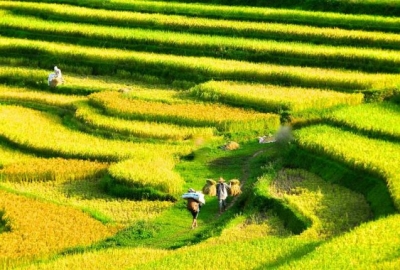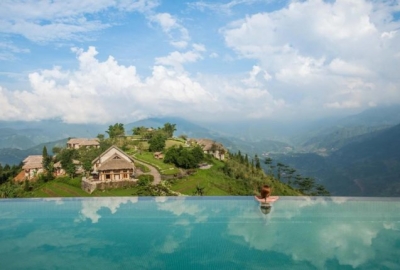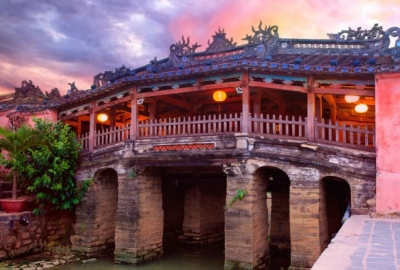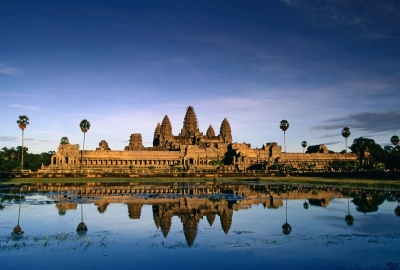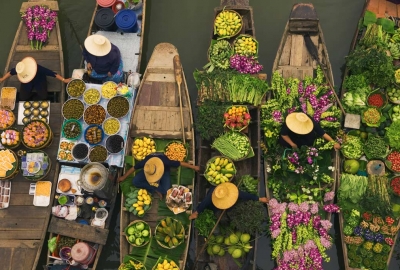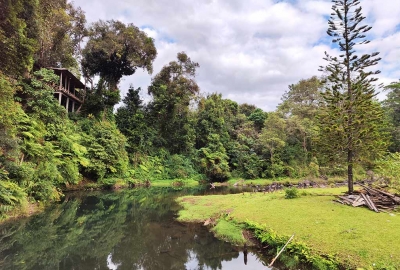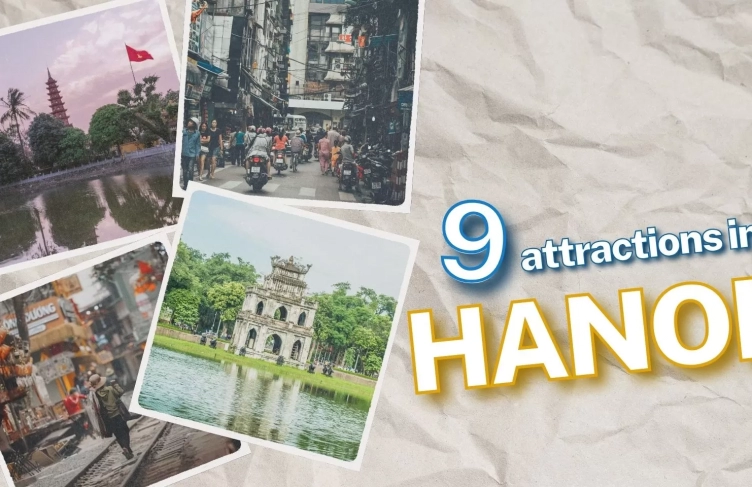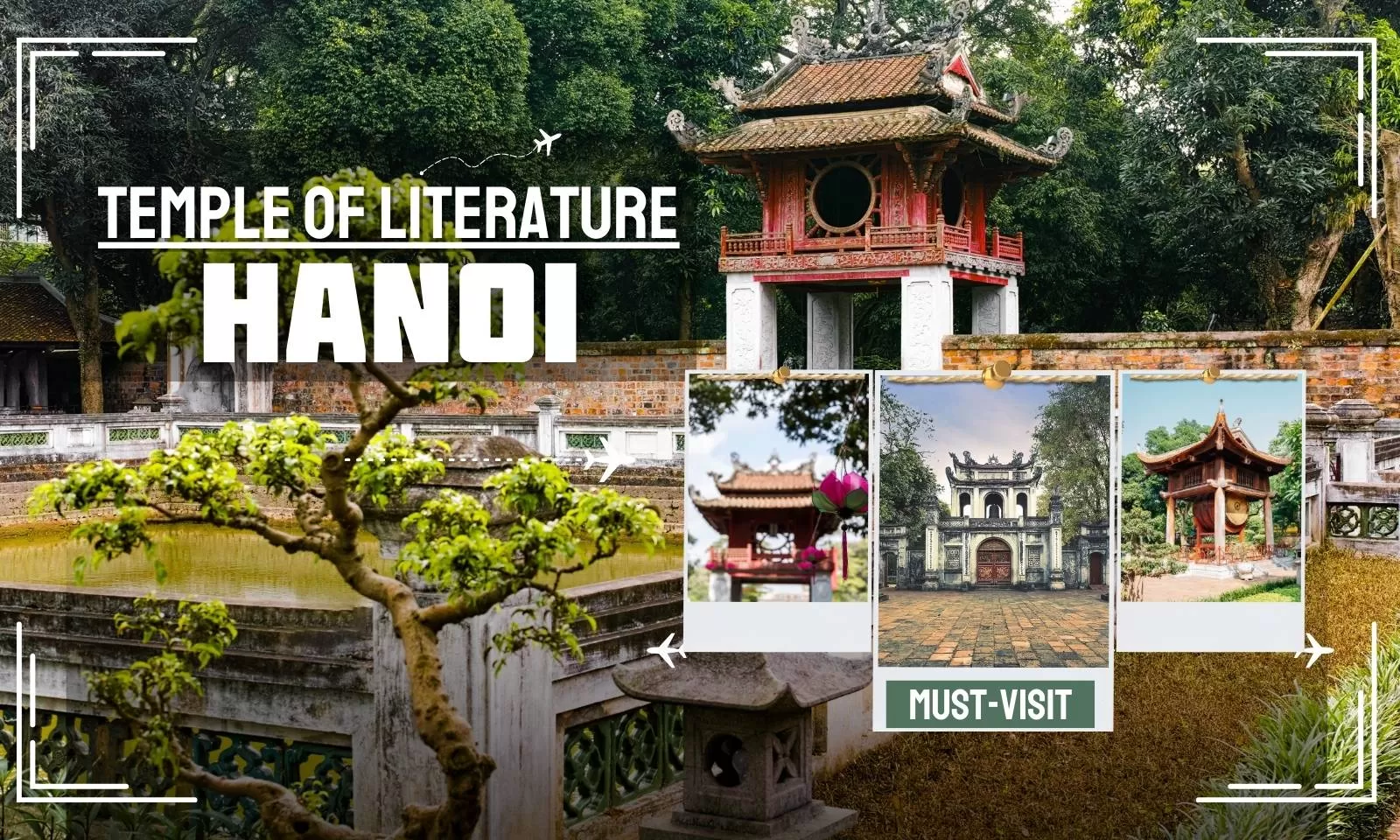
Temple of Literature Hanoi: A must-visit historical sites
Temple of Literature Hanoi is a must-visit historical site that reflects Vietnam’s rich educational legacy and timeless architecture. It’s a top historical site in Hanoi that attracts visitors from around the world. In this blog, we’ll explore why it’s worth your visit.

Tucked away in the heart of bustling Hanoi, the Temple of Literature Hanoi stands as a timeless cultural symbol and a source of pride for the Vietnamese people. With its ancient architecture and profound historical value, it’s not only a destination for history enthusiasts but also a journey into the soul of Vietnamese heritage.
Join Hanoi Voyages to explore this remarkable historical site and experience the enduring charm of the capital.
Table of Contents
Visiting the Temple of Literature Hanoi: An overview

The Temple of Literature, also known as Văn Miếu Quốc Tử Giám in Vietnamese. It is not only one of the most renowned historical sites in Hanoi but also a timeless symbol of Vietnam’s deep respect for education and Confucian values. It was home to the country’s first national university and was a prestigious center for training talented scholars for centuries.
Location of the Temple of Literature Hanoi
Address: No. 58, Quoc Tu Giam Street, Dong Da District, Hanoi
Opening hours: 8:00 AM – 5:00 PM daily.
Entrance fee: 70,000 VND (~$3).
The Temple of Literature is located at 58 Quoc Tu Giam Street, Van Mieu Ward, Dong Da District, just around 2 kilometers from Hoan Kiem Lake in central Hanoi. Its central position makes it easy for visitors to combine a trip here with other famous sites such as the Ho Chi Minh Mausoleum, One Pillar Pagoda, and the Imperial Citadel of Thang Long.
Despite being in the heart of a bustling city, the complex offers a tranquil and contemplative atmosphere, ideal for those seeking cultural and historical immersion. This is a must-visit destination when exploring the thousand-year-old cultural capital of Vietnam.
The meaning of the Temple of Literature
The Temple of Literature is not only Vietnam’s first national university but also a powerful symbol of the country’s long-standing respect for learning and Confucian values. It stands as a beacon of knowledge, where generations of Vietnamese scholars were nurtured, and where visitors today can still feel inspired by the names engraved on the Doctoral Steles — a legacy of excellence and dedication.
Recognized by UNESCO’s Memory of the World Programme, the 82 stone steles highlight the temple’s global cultural value. Today, the Temple of Literature continues to be a meaningful cultural and educational hub. It regularly hosts events that celebrate academic excellence, including award ceremonies for outstanding students, poetry festivals, and traditional cultural gatherings. During the Lunar New Year, it becomes a beloved destination for the Vietnamese tradition of "xin chữ" – seeking calligraphy blessings that represent good fortune, wisdom, and success for the year ahead.
Architectural highlights of the Temple of Literature Hanoi
The Temple of Literature Hanoi is divided into three main architectural zones: Văn Lake, Giám Garden and the inner temple complex of the Temple of Literature Hanoi. Each of these areas carries a unique historical and architectural charm, making the Temple of Literature Hanoi one of the most must-visit historical sites in Vietnam.
Văn Lake (Hồ Văn)
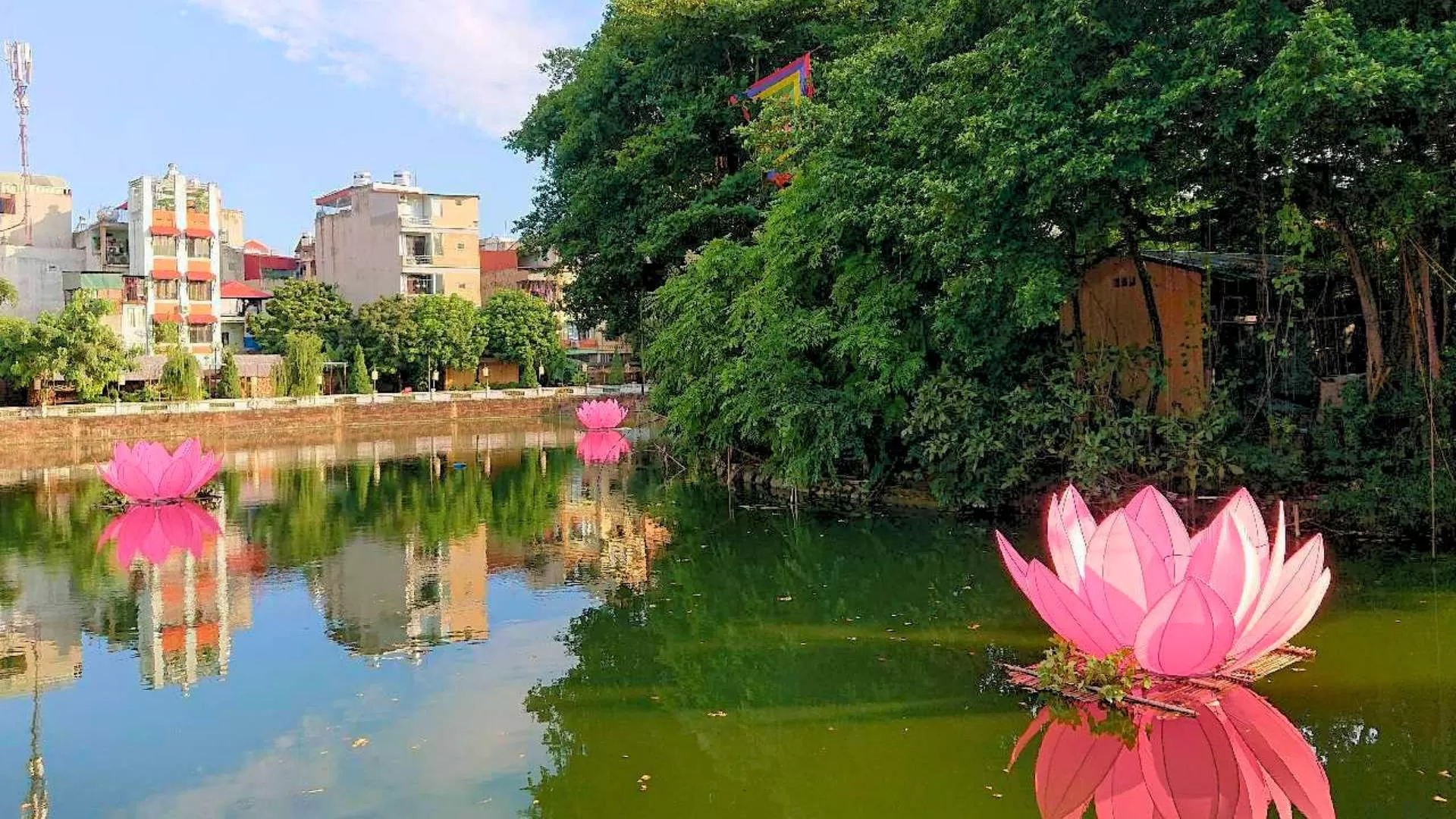
Also known as Minh Đường Lake, or Giám Lake, Văn Lake is situated just south of the Temple of Literature’s main gate. In ancient architectural design, it was intended as a symbolic “minor minh đường,” playing an important role in the overall spatial harmony of the complex.
The lake features clear, still waters bordered by lush, shady trees, creating a serene and refreshing entrance to the site. At the center of the lake lies a small islet, crowned with an elegant pavilion hidden beneath dense, leafy branches. This charming view offers a gentle sense of calm and coolness to all who step into the temple grounds.
Giám Garden (Vườn Giám)
Located to the west of the Temple of Literature Hanoi, along Tôn Đức Thắng Street, Giám Garden is a tranquil green space shaped like a quadrangle. This garden is home to lush trees, manicured lawns, creating a peaceful, open-air environment. With its refreshing atmosphere and natural beauty, Giám Garden enhances the serenity of the nearly thousand-year-old site.
The inner temple complex of the Temple of Literature Hanoi (Khu nội tự Văn Miếu Quốc Tử Giám)
The main temple complex of the Temple of Literature is a sacred area, set apart from Giám Garden and the outer surroundings by traditional brick walls. This inner sanctuary is organized into five sequential courtyards, each separated by walls and connected through gateways.
Văn Miếu Gate (Văn Miếu Môn)
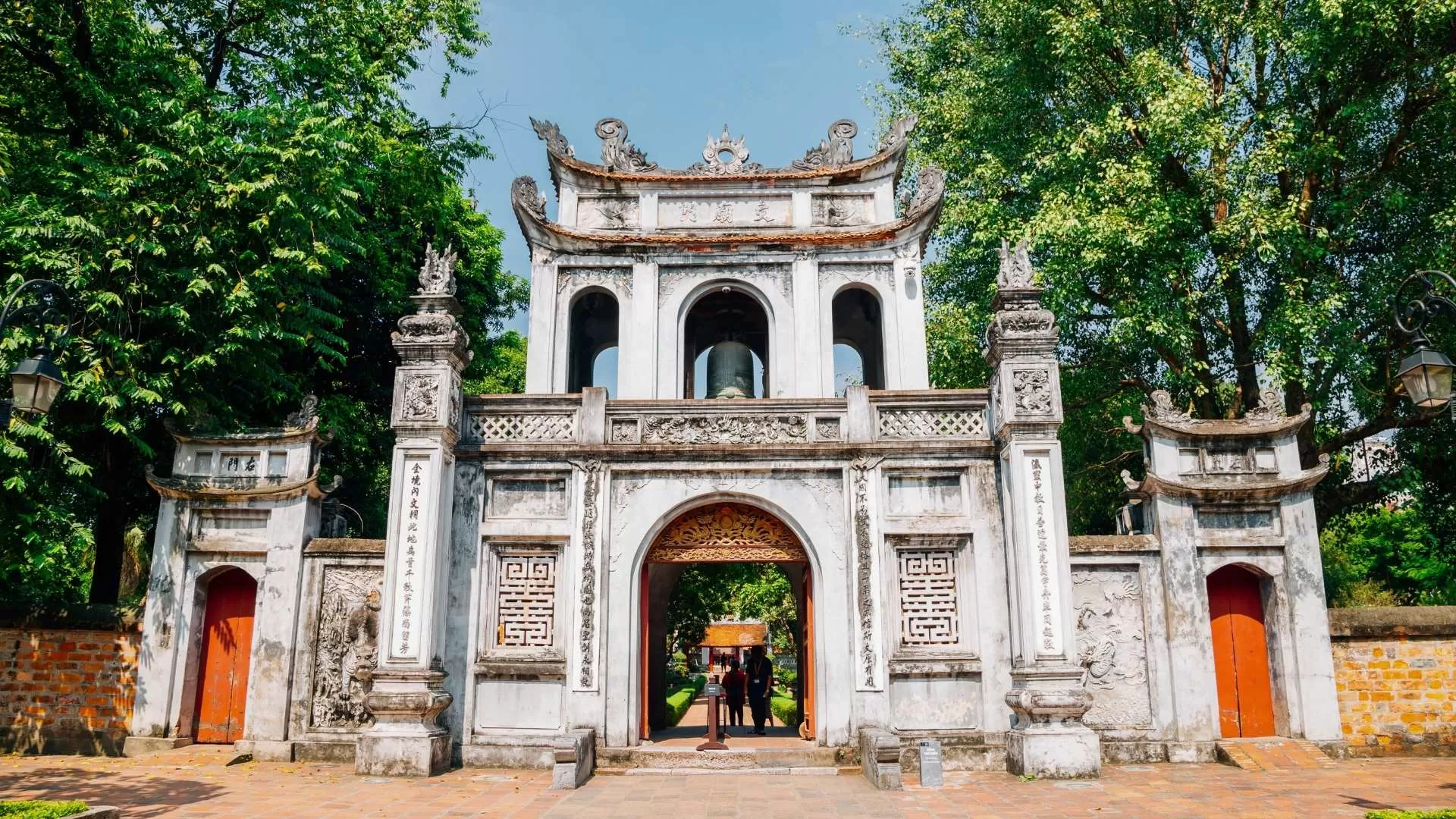
Văn Miếu Gate serves as the main three-entrance gateway (Tam Quan) located at the outermost boundary of the Temple of Literature Hanoi. The structure features three distinct doorways and two levels, with the upper tier inscribed with the Chinese characters "Văn Miếu Môn", meaning "Temple of Literature Gate."
In front of the gate, you'll find two stone steles on either side and a set of four ceremonial pillars (Tứ trụ nghi môn) in the center. The gate evokes a sense of solemnity and reverence, marking the formal entrance to one of Vietnam’s most iconic cultural landmarks.
Great Middle Gate (Đại Trung Môn)
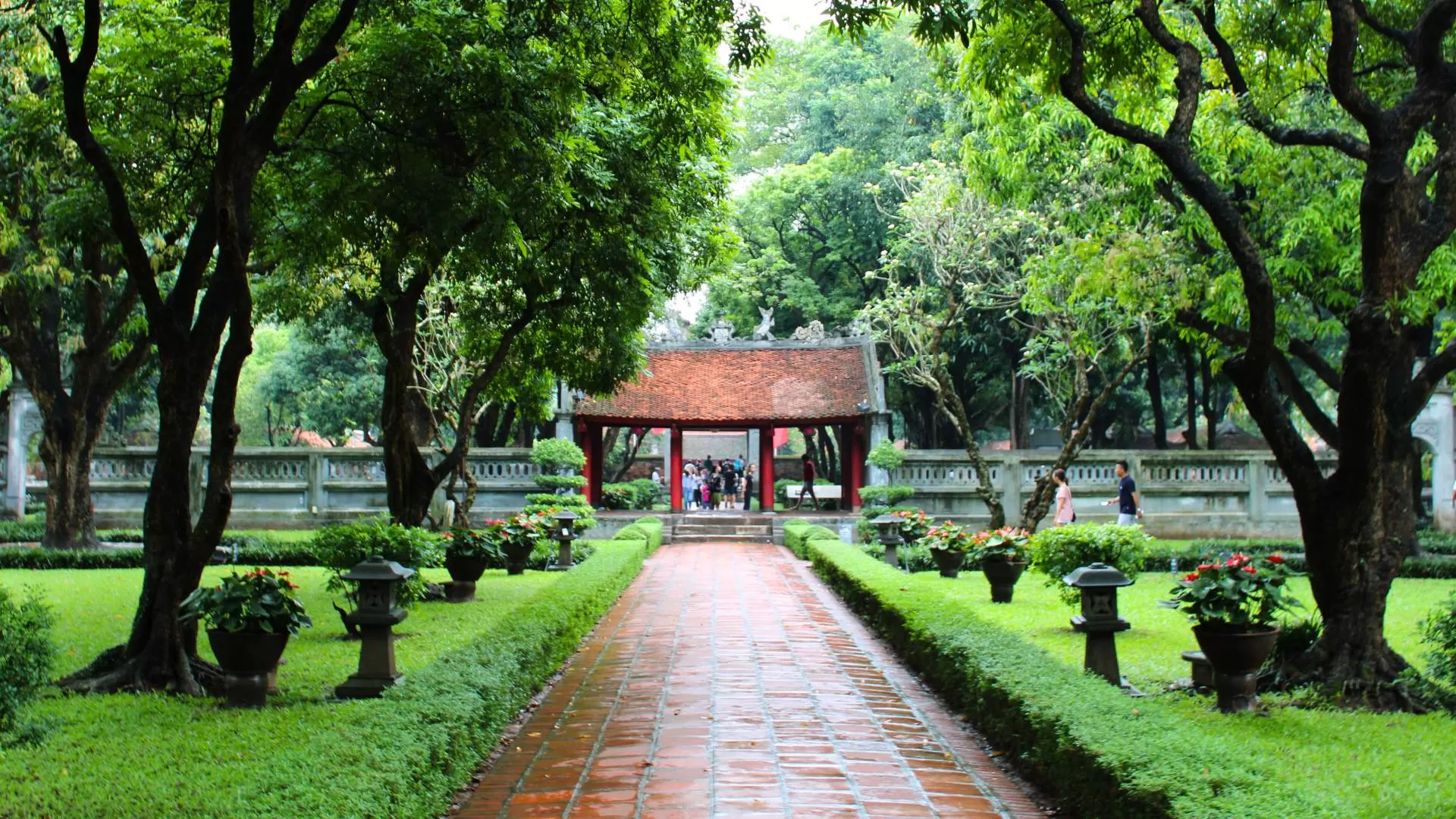
Đại Trung Môn is the second gate within the Temple of Literature complex. This traditional structure consists of three chambers. Its tiled roof, shaped like the curved shoes of ancient times (known as mũi hài), reflects classic Vietnamese temple architecture. Surrounding the gate is a spacious open area, with symmetrical walkways, green grass, creating a serene and contemplative space right in the heart of the city.
Khuê Văn Pavilion (Khuê Văn Các)

Khuê Văn Pavilion was built in 1805, is one of the most iconic structures at the Temple of Literature Hanoi. With four white stone pillars supporting a red wooden upper floor, the pavilion features distinctive circular windows and elegant architecture, blending harmony and symbolism.
Located beside the Well of Heavenly Clarity, Khuê Văn Pavilion represents the light of knowledge shining through time. Today, it is honored as the symbol of Hanoi, reflecting Vietnam’s long-standing respect for education, culture, and scholarly achievement.
Steles of Doctors and the Well of Heavenly Clarity (Bia Tiến sĩ & Giếng Thiên Quang)
Well of Heavenly Clarity
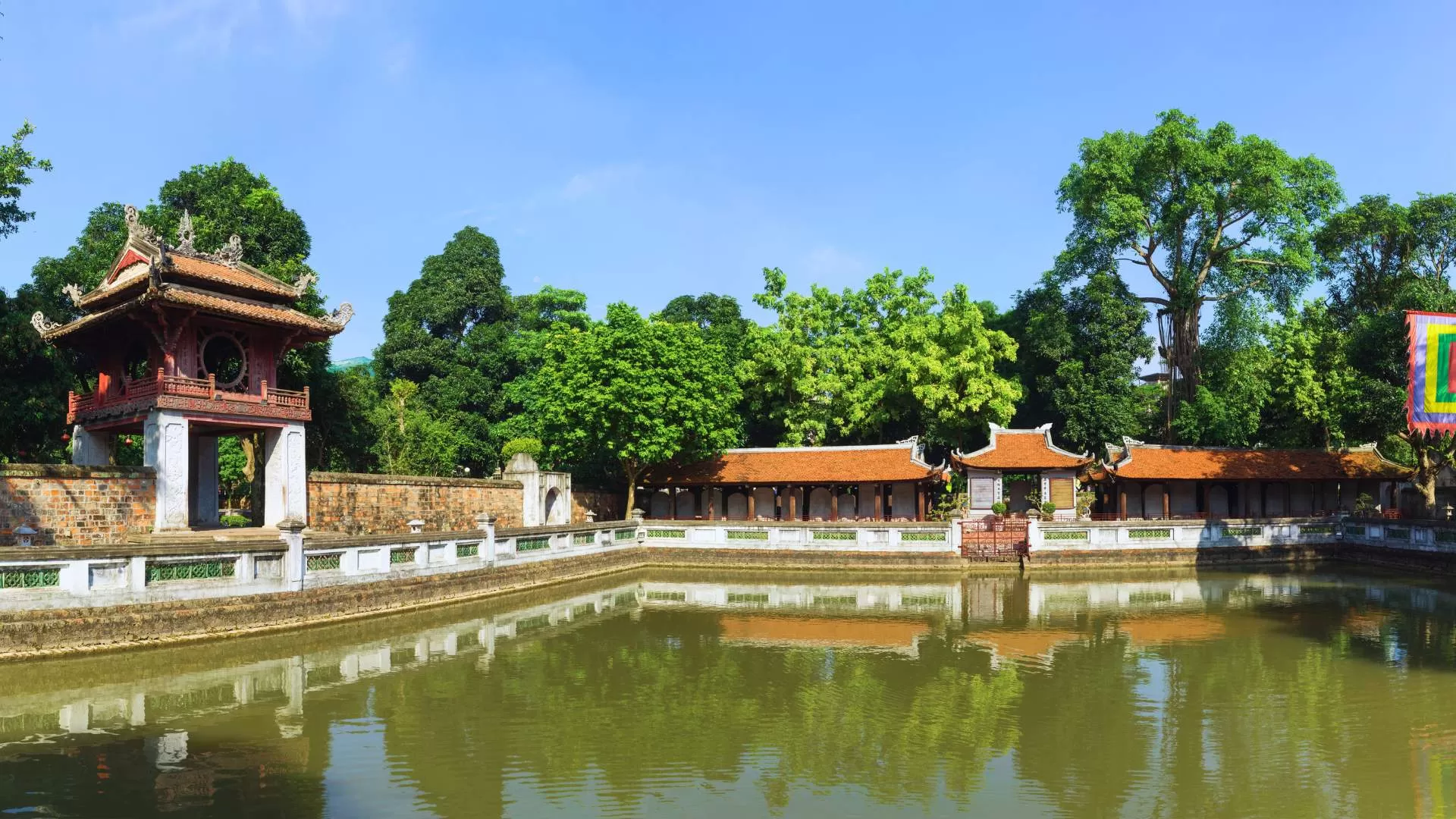
Next to the Khuê Văn Pavilion lies the Well of Heavenly Clarity (Thiên Quang Tỉnh), also known as Văn Trì. Its name symbolizes the reflection of the sky’s wisdom, representing the idea that humans absorb the universe’s essence to enlighten the mind and nurture human virtues.
The well is square-shaped, representing the earth, while the circular windows of the nearby Khuê Văn Pavilion symbolize the sky. This blend of shapes signifies the harmony of heaven and earth converging in this sacred place of learning.
Steles of Doctors
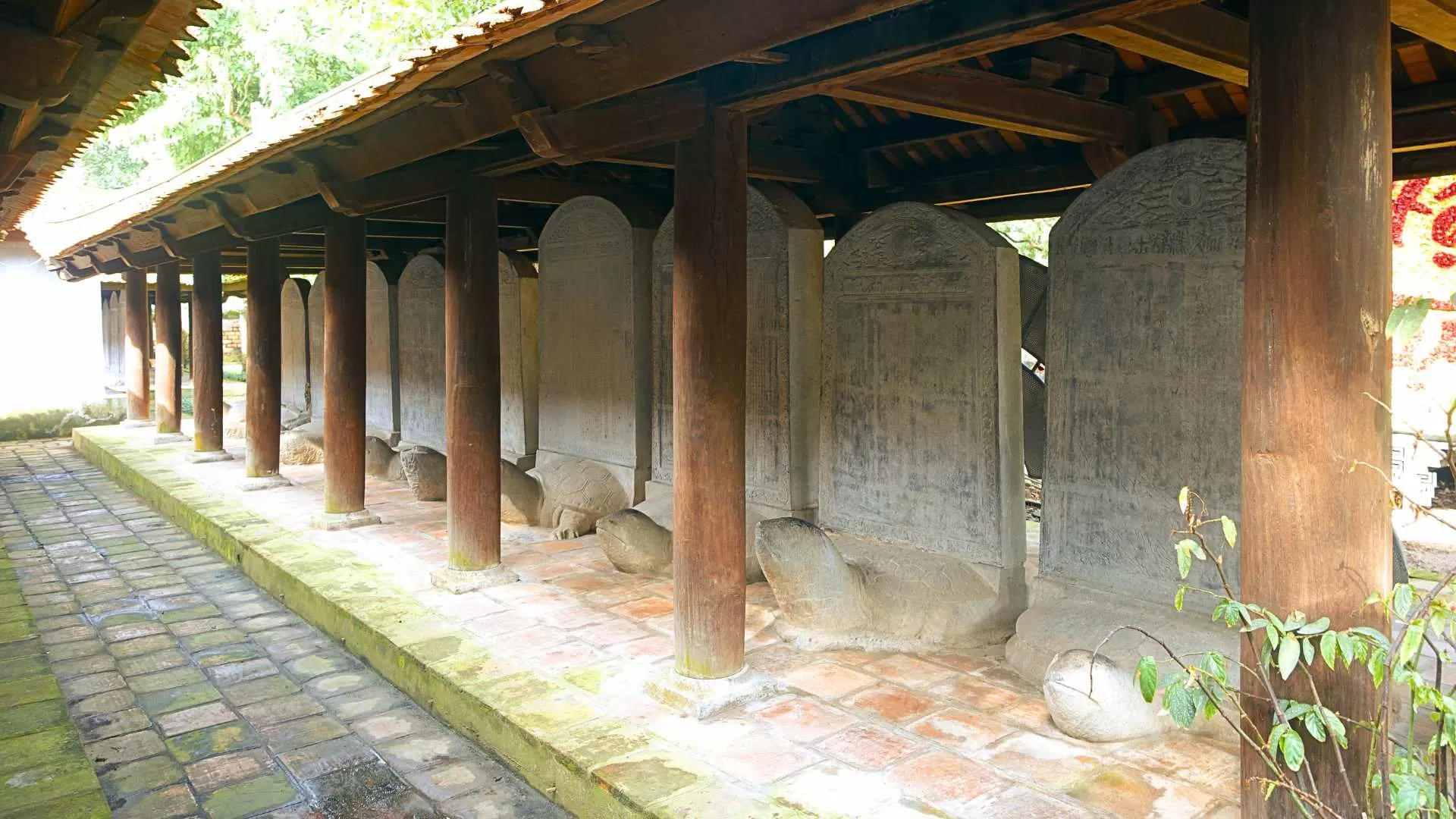
On both the eastern and western sides of the Well of Heavenly Clarity stand rows of stone steles dedicated to successful scholars of the imperial examinations. The first steles were erected in 1484 under King Lê Thánh Tông to celebrate academic excellence and inspire future generations.
Today, 82 stone steles remain, bearing the names and hometowns of 1,304 laureates from 82 examination sessions held between 1442 and 1779. Each stele sits atop a stone turtle, symbolizing longevity and wisdom. Among the honored are renowned historical figures like Lê Quý Đôn, Lương Thế Vinh, and Ngô Sĩ Liên—scholars whose work made lasting contributions to Vietnamese culture and national development.
Gate of Great Success and Main Worship Hall (Đại Thành Môn & Điện Đại Thành)
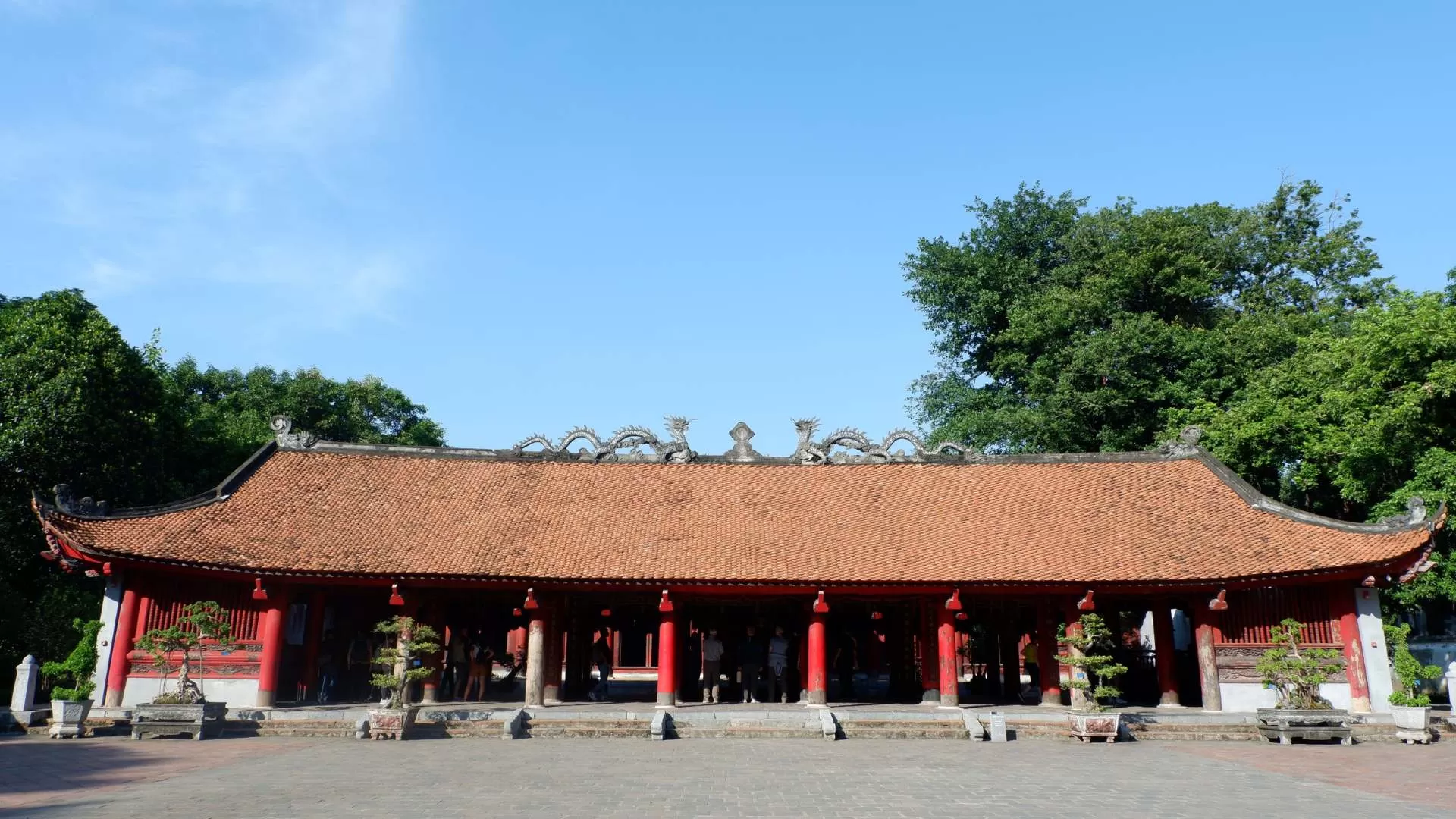
The Gate of Great Success (Đại Thành Môn) reflects the architectural style of the Later Lê dynasty (15th–17th century), with three tiled sections and ornate dragon carvings symbolizing national prosperity and reverence for education. Passing through the gate, visitors enter the Great Courtyard (Đại Bái), a spacious square paved with Bát Tràng tiles. At the far end stands the Đại Bái Đường, a grand ceremonial hall used for Confucius worship. With nine wooden-columned sections and a tiled roof featuring “two dragons flanking the sun,” it forms a traditional U-shaped layout with the Eastern and Western halls.
Behind it lies the Thượng Điện (Điện Đại Thành), or Upper Hall, which mirrors the Great Hall’s design. It is the temple’s most sacred space, housing statues of Confucius, his four famous disciples (Tứ phối), and ten brilliant philosophers (Thập triết). The richly decorated wooden columns are gilded, and the roof again features the symbolic sun-and-dragons motif.
Imperial Academy (Thái Học Area)
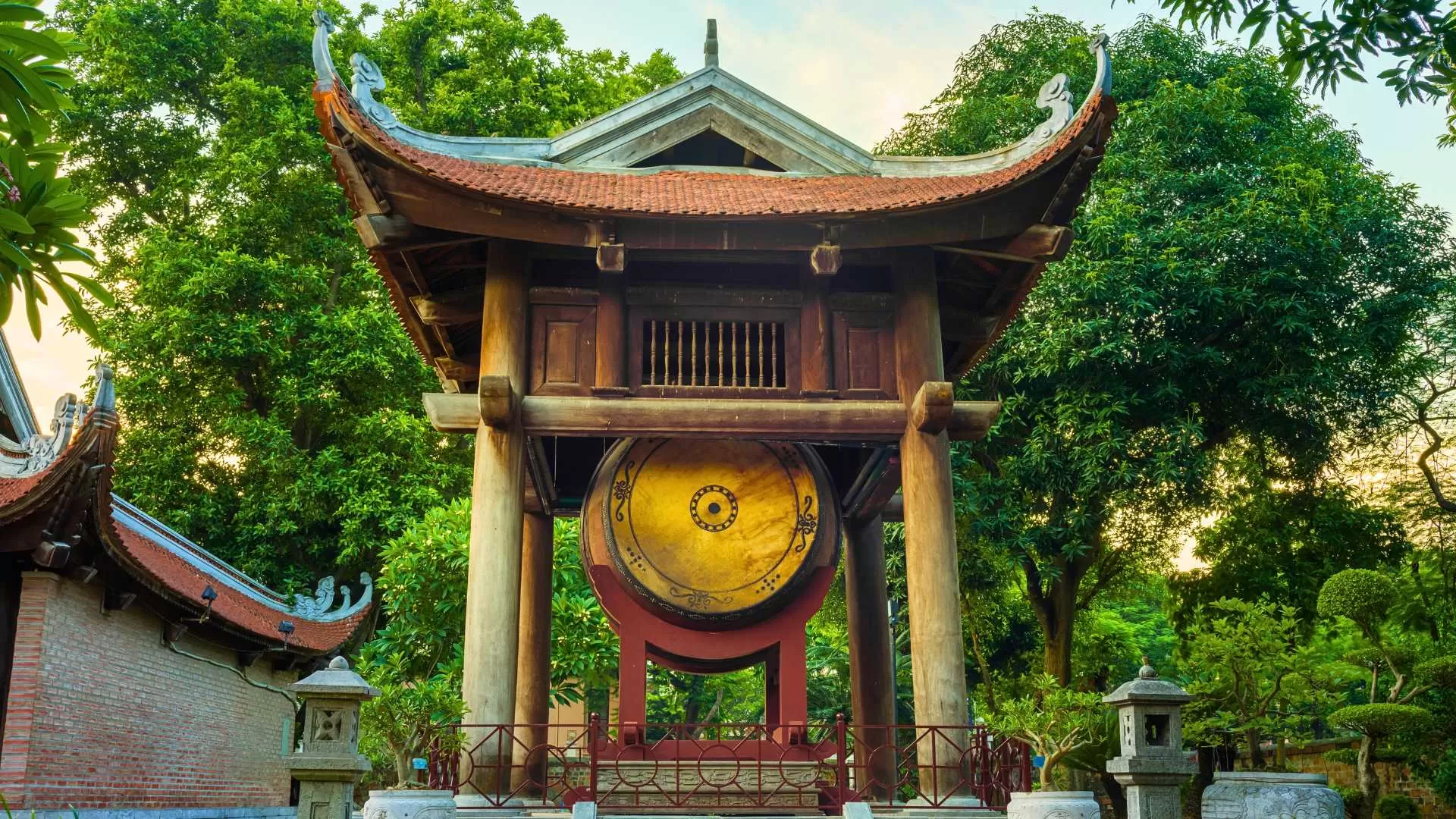
Originally established in 1076 as Quốc Tử Giám, the Imperial Academy was built behind the Temple of Literature and served as Vietnam’s first national university. Over time, especially during the Lê dynasty under King Lê Thánh Tông, it expanded into a prestigious institution known as Thái Học Viện, featuring lecture halls, libraries, and dormitories for hundreds of students. Sadly, the original complex was destroyed in 1946.
The current Thái Học Area was reconstructed in 2000 on the original foundation, following traditional Vietnamese architecture. It includes the Front Hall for cultural events and exhibitions, and the Rear Hall, which houses a statue of Chu Văn An, a revered principal of the academy, and exhibitions on Vietnam’s educational history. The upper level honors three influential kings: Lý Thánh Tông, Lý Nhân Tông, and Lê Thánh Tông, who played key roles in promoting Confucian learning in Vietnam.
Hanoi Voyages offers Vietnam tours for the best experience |
Hanoi Voyages proudly offers exciting and captivating tours to Vietnam:
If you want to explore the Temple of Literature Hanoi on your private tour, Hanoi Voyages also offers tailor-made itineraries to create the perfect trip for you. Contact us now! |
Tips when visiting the Temple of Literature Hanoi
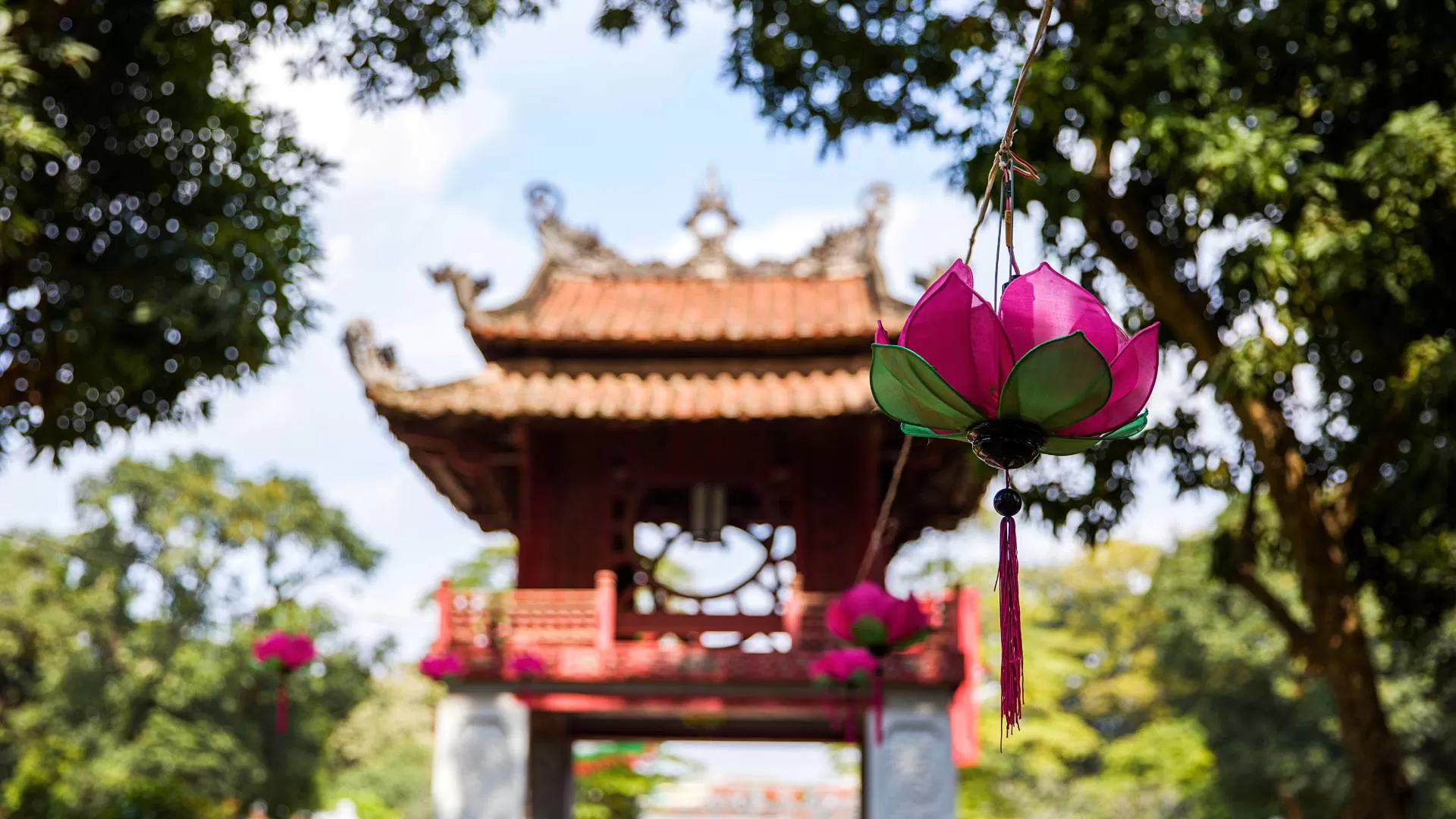
To preserve the sanctity and historical value of this sacred site, all visitors are kindly requested to follow these important rules:
Respect the heritage site
Always follow the instructions provided by the site management.
Do not touch or damage artifacts or structures.
Avoid sitting on, climbing, or touching the Doctor Steles, including rubbing the turtles' heads.
Refrain from writing, carving, or drawing on any part of the monuments.
Dress appropriately
Dress modestly and respectfully. Avoid wearing shorts, mini skirts, or revealing clothing.
Shoes, hats, and smoking are strictly prohibited in the exhibition halls and worship areas.
Maintain a respectful attitude
Do not shout, use offensive language, or behave disruptively.
Follow proper etiquette at worship areas: light incense only in designated spots, offer rituals respectfully, and avoid lighting excessive incense sticks.
Any professional filming or video production must be approved by the site’s management beforehand.
Protect the environment
Keep the area clean; do not litter.
Avoid climbing walls, stepping on grass, picking flowers, breaking branches, or fishing in the ponds.
Swimming is not allowed anywhere within the site.
By following these rules, you help preserve the Temple of Literature Hanoi, a treasured cultural and historical site, for future generations to enjoy.
The Temple of Literature is truly a must-visit historical site that reflects the rich intellectual and cultural heritage of Vietnam. As a well-preserved historical site in Hanoi, it invites travelers to step back in time and discover the country’s deep respect for education and Confucian values.
Let Hanoi Voyages be your guide to uncovering the soul of the city through curated tours and local insights. Contact us now!
Dream about your trip to Asia, in private
We are here to make it happen with youFREE QUOTE, WITHOUT OBLIGATION






